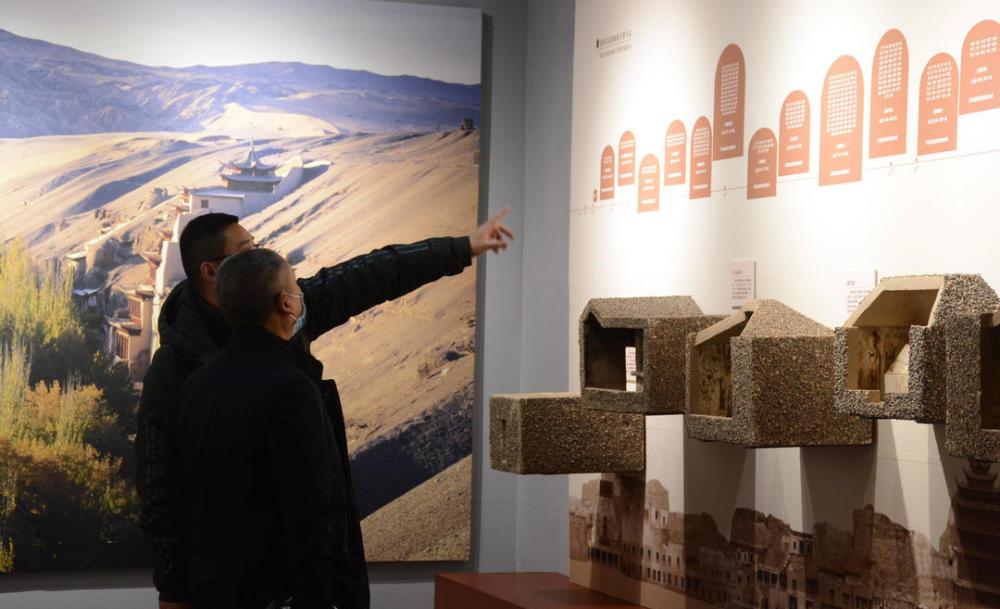
Cover news reporter Ye Haiyan
"The Dunhuang murals have a deep connection with Leshan and Mount Emei, and the image of Mount Emei in the Dunhuang murals has appeared in more than 70 places." On January 25th, at the opening ceremony of the Emeishan Grottoes Art Exhibition in the Dunhuang Murals, Song Qiu, Vice Mayor of Leshan City, introduced the wonderful origins between Dunhuang culture and Leshan culture.
The cover news reporter learned from the grotto art exhibition that the origins of Sichuan and Dunhuang are inseparable. In the 1940s, Zhang Daqian, a great painter from Sichuan, went to Dunhuang to copy the murals and returned to Sichuan to hold an exhibition, causing a global sensation. Zhang Daqian's copying activities and initiatives led to the establishment of a governing body by the nationalist government at the time, the National Dunhuang Art Research Institute, the predecessor of the Dunhuang Academy.
Yang Xinren, secretary of the party branch of the Art Research Department of the Dunhuang Research Institute, said that Leshan and Dunhuang have deep roots, and the two are located in the key points of the Silk Road in the south and north, which together witness the history of ancient Chinese and foreign cultural and Buddhist cultural exchanges. In the Tang Dynasty, the peak of Chinese civilization, the number of cave statues in Dunhuang Mogao Caves was extremely large, and a large number of murals and paper silk paintings of the image of King Vishamon were painted for each period. The world's largest stone carving, the Leshan Giant Buddha, was also excavated during this period, and the characteristics of the Statue of King Vishamen, which were carved into the Rock of the Thousand Buddhas in Leshan Jiajiang, are basically the same as those stored in the Dunhuang Grottoes.
Puxian change
As the ashram of Puxian Bodhisattva, Mount Emei is one of the four buddhist holy places in China. The cover news reporter saw in the picture of Puxian change in the Western Xia period of The Third Cave of Yulin Cave on display, Puxian Bodhisattva riding on a white elephant, holding a scripture in his hand, looking down at the netherworld, and looking compassionate. Mount Emei, located in the upper part of the south side of the picture, is a typical Northern Song Dynasty ink landscape style. Puxian and the saints are in the clouds, the lower end is the mighty sea, and the shore is a wide end of the mountain. Yang Xinren said: "According to expert research, the landscape of this mural is likely to be a depiction of Mount Emei at that time. ”
Citizens' viewing
It is reported that the Emeishan Grotto Art Exhibition in the Dunhuang murals will be exhibited at the Leshan Art Museum and the Emeishan Museum from January 25 to March 15, march 31 to April 20, respectively, and will exhibit a total of 160 exhibits such as replica caves, cave miniature models, replica statues, replica murals, and imitation musical instruments.